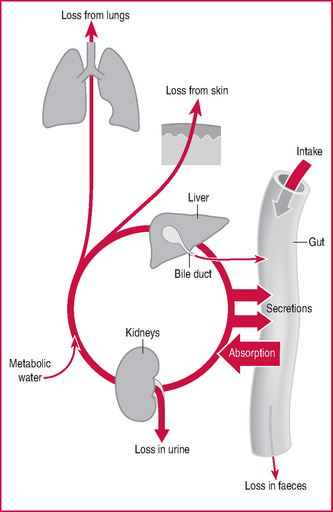W
waist–hip ratio (WHR) circumference at the waist divided by that at the hips; an index of body fat distribution, said to be ideally not >0.8 in women and not >0.9 in men, i.e. a low ratio (‘pear-shape’) is healthier than a high ratio (‘apple shape’). Some large-scale studies have found evidence that WHR is a better predictor than body mass index for coronary heart disease.
warm-down period of progressively less intense dynamic activity and stretching, undertaken promptly after a competition or bout of high-intensity training with a view to preventing blood pooling (leg exercise), better clearing of lactate and other waste products and mini mizing subsequent stiffness. Also known as cool-down.
warm-up period of dynamic activity and stretching, initially gentle and loose but increasing in intensity and focus over 5–10 min, which gradually elevates heart rate and oxygen uptake as well as raising the tem1perature of muscle and other soft tissues. Undertaken shortly before a competition or bout of high-intensity training (which itself may be dynamic or static), with a view to enhancing performance and reducing the likelihood of soft tissue injury or cardiovascular incident.
water balance the state when the amount of water consumed in food and drink plus that generated by metabolism equals the amount of water excreted. Intake is regulated by behavioural mechanisms, including thirst and salt cravings. While almost a litre of water per 24 hours is unavoidably lost via the skin, lungs and faeces, the kidneys are the site of regulated excretion of water in the urine. In a moderate climatic environment, to achieve water balance a sedentary individual should consume ∼2 litres of water daily; in hot dry environments up to 4 litres may be needed. Athletes require additional intake to match the loss due to a high sweating rate, depending in turn on the type and severity of exercise, on the temperature and humidity, and on heat acclimatization. See also hydration status, posterior pituitary, sports drinks, thirst. Fig facing.
weight the force due to the effect of gravity on the mass of a body or object. Can be calculated by multiplying the mass by the acceleration due to gravity. Correctly, expressed in newtons. Commonly (usually, in the public context) but incorrectly referred to in units of mass (e.g. kg).
weight-bearing exercise exercise in which the legs support the body weight.
weight-lifting sport consisting of lifting maximum possible free weights through a variety of previously stipulated body positions.
weight training strength (‘resistance’) training using either free weights or those providing the loads in exercise machines. See also strength training.
< div class='tao-gold-member'>








